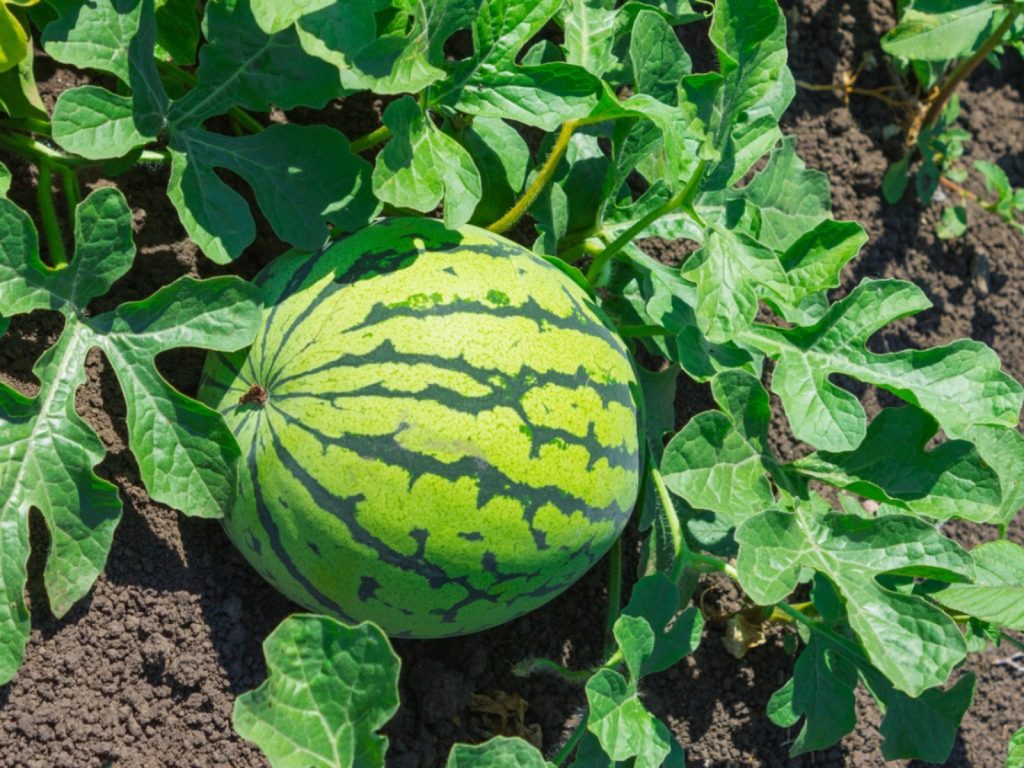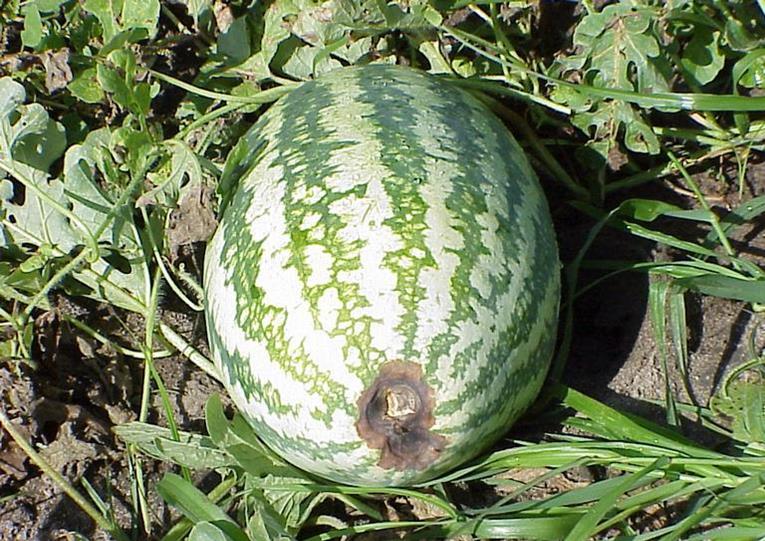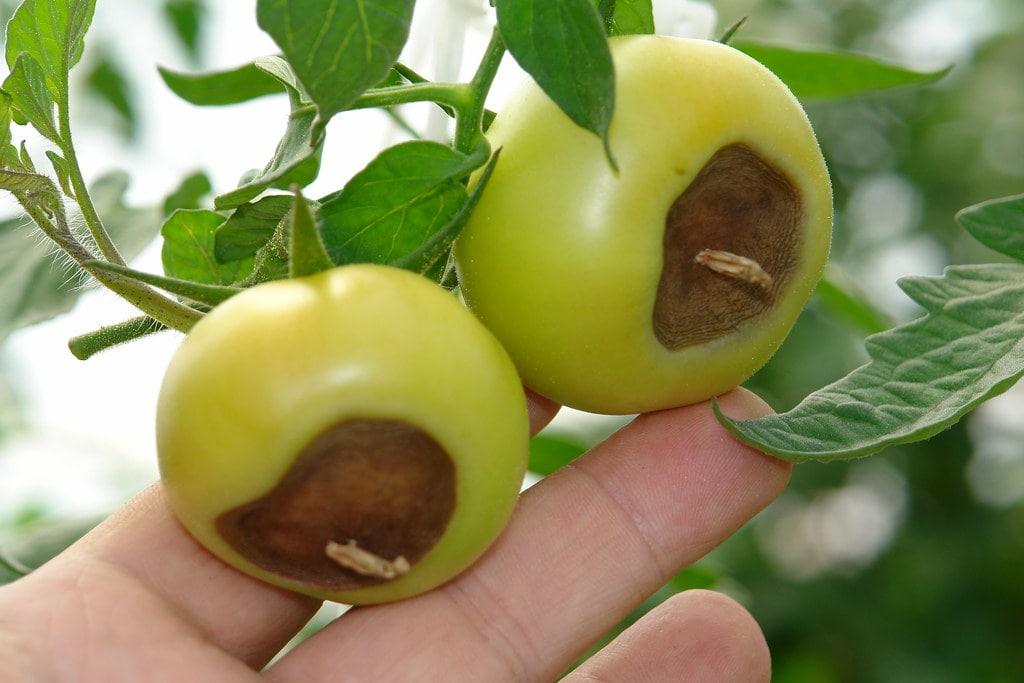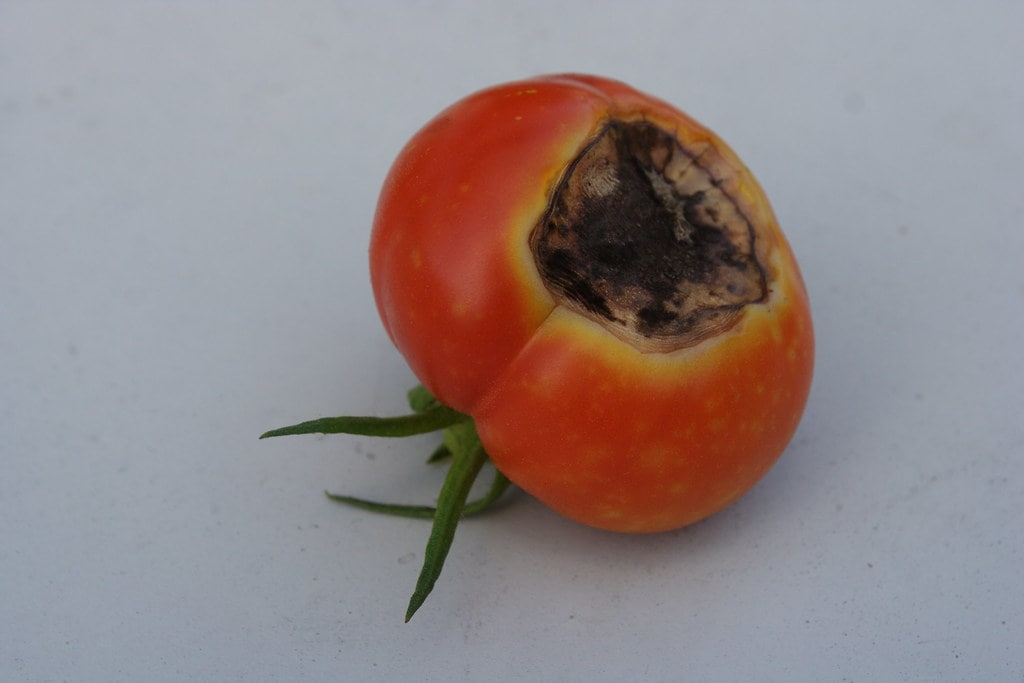The watermelon plant belongs to the Cucurbitaceae family that produces flowers. It produces delicious fruits that are eaten worldwide and are full of nutrition. But it can be affected by various harmful diseases.
Blossom end rot is also one of them. This piece of content provides detailed information on Blossom End Rot on Watermelon.
Symptoms
- The appearance of the burned portion of the fruit of the watermelon plant.
- Formation of light brown spots that turn into lesions that darken and dry over time. Sunken leathery spots are also visible.
- Decaying of fruits at a fast rate.
Although the disease is not contagious, the removal of infected plants is a must.
Causes of Blossom End Rot On Watermelons
- Water is taken into plants through their root system. It is utilized by plants and some of it evaporates. Water evaporates from the leaves of plants. This situation occurs when the sun warms up the plant surface. Water from leaves transpires and more water takes its place and thus the plant does not burn. The leaf surface is smooth, water movement from other parts to leaves is easy and quick.

On the contrary, fruits have harder skin. Thus, the movement of water is not fast as the pull of water is slow.
Therefore, the bottom portion of the fruit deprives moisture and burns. It usually darkens or appears shriveled. Decaying also starts occurring eventually. More organisms like insects can attack easily.
- Imbalance in Ca levels is also a major cause of blossom rot in watermelon. Ca is immobile relatively. But due to heavy transpiration Ca be moved to leaves in high amounts making fruits deprived of them.
Prevention of Blossom End Rot On Watermelons
Soil conditions
Proper soil conditions are so important to ensure healthy growth in plants. In case the soil fertility of your planting site is unfit, a variety of diseases and abnormalities are bound to occur. Infected plants are of no use and even distracts from a healthy crop.
Therefore, getting your soil tested is highly recommended. It will aware you of things that your soil has more or what it lacks. Moreover, it is important to know the pH level of the soil.
All you need to do is, take a small sample of soil and take it to the nearest lab for agricultural testing. It will provide you proper details about the nutrient level and pH level of the soil.
This will make sure you provide only necessary nutrients and do not overdo it.
In the case of watermelon, 6.5 on a pH scale is perfect for its growth. Anything above or below will lead to complications.
Fall is a perfect time to test the soil before sowing watermelon seeds in the spring season.
Next, if the soil lacks in Ca, it leads to blossom end rot in watermelon. After checking soil 3 months before planting, add lime to the soil to overcome Ca deficiency.
Get the soil tested every 3 years for proper growth. If soil is problematic then annual testing is suggested.
Must Read: How To Do Watermelon Farming?
Watering
Keeping the soil moist at all times with proper and regular watering is a must to avoid this disease.
The water content of soil changes and keeps fluctuating from dry to wet at times of watermelon blossoming is inadequate. This can lead to melon blossom end rot in watermelons.
Irregular watering leads to uneven intake of Ca by watermelon plants.
However, this disease can be caused even when there is a proper amount of Ca. if there is improper water at the time of fruit formation or blossom developing.
To avoid disease, 1- 1.5 inch water level should be provided during fruiting periods.

Nitrogen Content
If nitrogen is present in limited amounts in soil, blossom end rot can occur possibly.
The work of nitrogen is to increase the size of leaves in plants. If nitrogen is found in an improper amount, the size will be affected obviously.
Due to this, more Ca is directed towards fruits. This leads to an imbalance in Ca amount and causes Blossom end rot.
Watermelon rotting on Vine
Watermelons rotting on the vine are possibly visible in conditions like Blossom end rot, Belly Rot, Gummy Stem Blight, Bacterial Fruit Blotch, and Rind Necrosis.
Tips
- Watermelons should be planted in well-drained soil to ensure proper watering and moisture conditions. This ensures plants develop a deep and large root system to absorb healthy amounts of Ca from the soil.
- Mulch can also be used to retain moisture in the soil. It compresses weeds too. 2-4 inches of mulch is perfect for watermelon plants. It holds moisture in the soil by blocking evaporation.
Watermelon Growing Problems
Growing watermelon is not a piece of cake. It comes with problems. There can be watermelon plant problems that affect fruiting and render plants useless.
Few diseases and abnormalities are mentioned below-
- Leaf Curling- leaves curl under and turn yellow. They get deformed and can be easily identified. Aphids are tiny, oval creatures that reside on the underside of leaves and lead to this abnormality. It releases a sticky substance known as Honeydew. It is advised to use insecticidal soap.
- Leave discoloration- leaves start turning yellow, pale green, or brown. Spider mites can be a possible reason behind this. Spraying water can help in getting rid of such insects. Infected leaf removal can be better as it protects the whole plant.
- Tunnels on leaves- Trails or tunnels are observed on leaves. It is caused by leaf miner larvae. Cultivate a garden to decrease this disease occurrence. Larvae get destroyed upon cultivation.
- Water-soaked blotches- leaves get infected and suffer from the appearance of water-soaked blotches. Angular leaf spots can appear which turn yellow or crisp. Pruning leaves infected by this disease can prove helpful. Do not wet foliage much as wetting leads to disease.
- Bitter Fruits- inadequate pollination can cause bitterness of fruit and misshapen fruits. Dry soil and high temperatures also lead to this condition. Poor soil fertility is disastrous.
Conclusion
Blossom end rot is a harmful condition in plants that destroys fruit and makes them inedible. Infected fruits cannot be treated to turn them into healthy ones. But, prevention is better than cure.
Therefore, following the preventive measures mentioned above can assure you healthy and edible fruits of melon.



